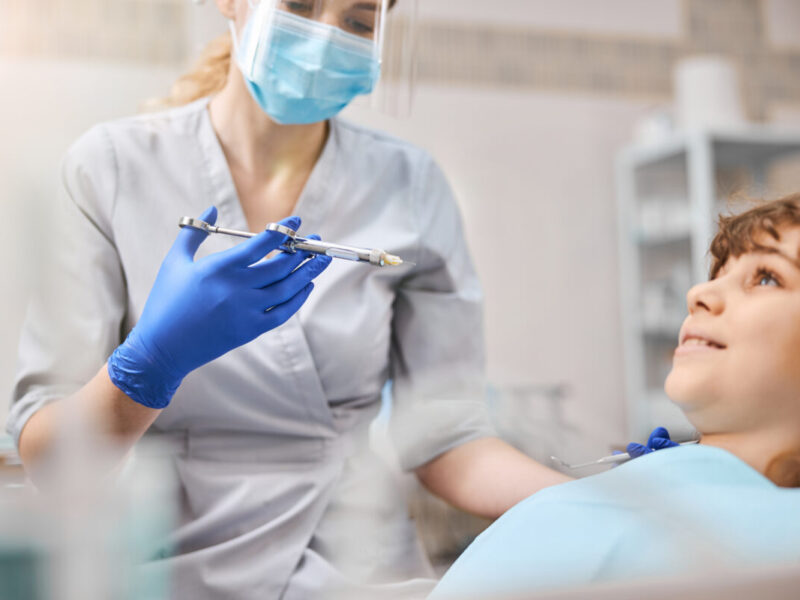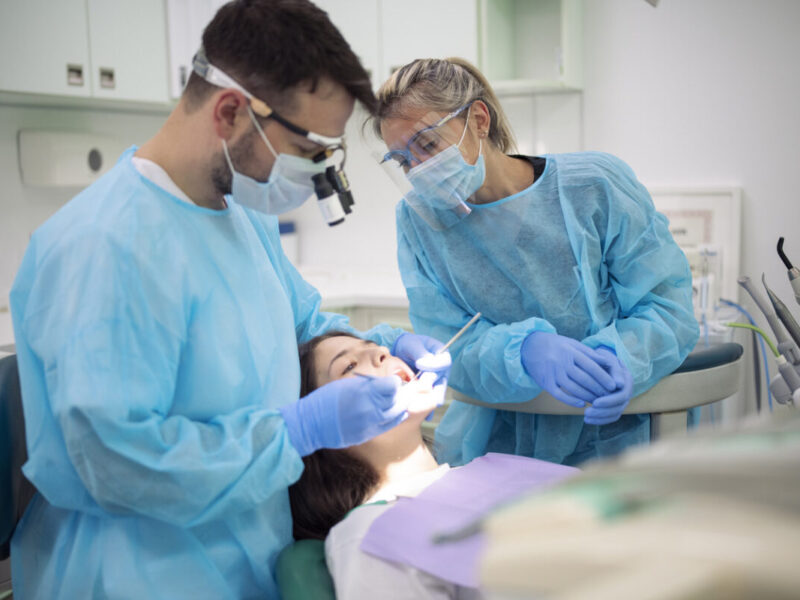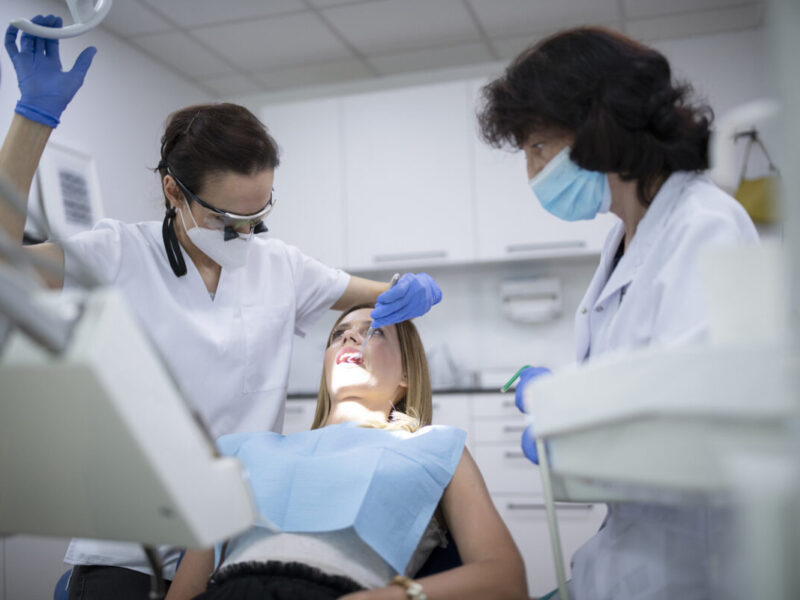Numbing for Gag Reflex
Numbing for Gag Reflex: How It Can Make Dental Visits Easier
Are you concerned about gagging at the dentist? You’re in good company. Discover how numbing for gag reflex can ease your dental visits. Our article sheds light on effective numbing techniques that reduce this involuntary response, ensuring a smoother, more comfortable experience.

What is a Gag Reflex?
A gag reflex is your body’s natural response to stop something from going down your throat that shouldn’t. Think of it as your mouth’s own safety guard. When something touches the back of your mouth, roof of your mouth, back of your tongue, or area around your tonsils, it can trigger this reflex. This is why you might gag when you try to swallow something too big or when the dentist is checking your teeth.
Why Some People Have a Stronger Gag Reflex
You might wonder why some people seem to gag more easily than others. Well, it’s because everyone’s body reacts a bit differently. For some, their gag reflex is more sensitive, making them feel like gagging with even slight touches or when they’re nervous or anxious. It’s not something they choose; it’s just how their bodies are wired. Understanding this can make us more patient with ourselves and others, especially during dental visits or when facing situations that could trigger this reflex.
The Role of Numbing for Gag Reflex in Dental Procedures
In dentistry, numbing techniques are essential for ensuring that patients undergo procedures without discomfort, effectively turning off the mouth’s pain signals temporarily. Through the use of local anaesthetics such as lidocaine or novocaine, these numbing agents act like a switch, blocking the nerves in your mouth from sending pain messages to your brain.
How Numbing Works
Applied directly to the targeted area via gel, spray, or injection, they allow you to feel only pressure, not pain, making dental treatments much more bearable. This advancement in dental care transforms potentially painful procedures into manageable ones, significantly improving the patient experience.
Next time you’re in for a dental procedure, the absence of pain can be attributed to the strategic use of these anaesthetics, making modern dentistry more comfortable and efficient than ever before.
Does Numbing for Gag Reflex Work?
Numbing agents, or anaesthetics, can indeed play a role in reducing your gag reflex. Here’s how: When you’re at the dentist, and they apply a numbing agent to your mouth, it’s not just about stopping pain; it can also dull the areas that trigger your gag reflex. This means that the usual suspects in your mouth that would make you gag—like the back of your throat or the roof of your mouth—don’t send their usual signals to your brain saying, “Hey, something’s not right here!” In essence, the strategic application of numbing for gag reflex can significantly mitigate this common concern.
Topical Numbing vs. Injections
Now, there’s a bit of a difference between the two main types of numbing you might encounter at the dentist: topical numbing and injections.
Topical Numbing: This is the stuff that’s applied directly on the surface of your mouth. Think of it like a strong numbing cream or gel. It’s great for surface procedures and can help with reducing the gag reflex for things like dental impressions or X-rays. However, it’s more about numbing the surface area, so its effect on the gag reflex can be limited to the areas it’s applied to.
Injections: These are the next level up. When a numbing agent is injected, it goes deeper than just the surface. This can be more effective in managing the gag reflex because it numbs a larger area and can affect the nerves more profoundly. Injections are typically used for more invasive procedures, but they can also offer a more significant reduction in the gag reflex by affecting the nerves and muscles involved more extensively.
Other Techniques to Manage a Gag Reflex During Dental Visits
Managing a gag reflex during dental visits is crucial for both comfort and effectiveness of treatment. Beyond the use of anaesthesia, several strategies can make a big difference.
Breathing Techniques and Their Effectiveness for a Gag Reflex
Breathing techniques are a simple yet powerful way to manage gag reflexes. Focusing on deep, slow breaths through the nose can help distract the mind and reduce the overall sensitivity of the gag reflex. This method works because it encourages relaxation and reduces anxiety, which are often triggers for the gag reflex. By concentrating on breathing, patients can gain a sense of control during dental procedures, making them feel more comfortable and less prone to gagging.
Positioning Strategies to Reduce Discomfort
The way you’re positioned in the dental chair can also impact your gag reflex. Sitting up slightly, rather than lying flat, can help reduce the feeling that triggers gagging. Some dentists may also recommend turning your head to one side or using a dental prop to keep your mouth open without strain. These positioning strategies help by minimizing the pressure and presence of foreign objects at the back of the throat, reducing the urge to gag.
The Use of Sedation Dentistry
For those with a strong gag reflex that breathing techniques and positioning strategies cannot manage, sedation dentistry becomes a valuable option. Sedation dentistry involves using medication to help patients relax or even sleep through procedures. Options range from laughing gas and IV sedation, which keep you awake but relaxed, to general anaesthesia, under which you’re completely asleep. Sedation can be particularly effective because it addresses the gag reflex at its neurological roots, significantly reducing or eliminating the body’s gag response.
Preparing for Your Visit if You Have a Strong Gag Reflex
Having a strong gag reflex can make dental visits challenging, but with the right preparation and communication, you can significantly reduce discomfort and anxiety.
Discussing Your Gag Reflex with Your Dentist
Be Open and Honest: Start by being straightforward with your dentist about your gag reflex. Discussing it openly can help your dentist understand the extent of your reflex and plan the appointment accordingly.
Share Past Experiences: If certain procedures or strategies have worked for you in the past, let your dentist know. Similarly, share what hasn’t worked so they can avoid those methods.
Ask About Techniques and Tools: Dentists have various techniques and tools designed to minimize discomfort for patients with a strong gag reflex. Asking about these can help you feel more prepared and less anxious.
How Dentists Can Tailor Treatment
Customizing the Approach: Knowing about your gag reflex in advance allows dentists to tailor their approach. They might schedule more time for your appointment so procedures can be done slowly and with breaks.
Using Distraction Techniques: Some dentists might use distraction techniques such as talking to you, having you listen to music, or using visual aids to help keep your mind off the procedure.
Applying Numbing Agents: Topical numbing agents can be applied to the areas of the mouth that trigger your gag reflex, making them less sensitive during the examination or treatment.
Sedation Options: For extreme cases, your dentist might suggest sedation dentistry. This can range from mild sedatives to help you relax to more profound sedation where you’re almost asleep, depending on the severity of your gag reflex and the procedure being done.

Caring for Your Mouth Post-Procedure
After a dental procedure, taking care of your mouth is crucial for a smooth recovery. Here’s what you need to know, especially if you’re feeling gaggy as the numbing wears off, along with tips on foods and activities to avoid.
Dealing with Gag Reflex Post-Numbing
Stay Calm and Breathe Through Your Nose: Once the numbing starts to wear off, you might feel a bit gaggy. It’s important to stay calm. Try taking slow, deep breaths through your nose to help manage the sensation.
Sip Cold Water: Gently sipping cold water can help soothe your throat and reduce the gaggy feeling. Just be sure to sip slowly and avoid swishing the water around too much if your mouth is still sensitive.
Avoid Lying Down Right Away: If you’re feeling nauseous or gaggy, lying down can sometimes make it worse. Try to stay sitting up for a while after your procedure.
Foods and Activities to Avoid
Steer Clear of Hot, Spicy, and Crunchy Foods: Immediately after your dental procedure, it’s best to avoid foods that are hot, spicy, or have a crunchy texture. These can irritate your mouth, especially if you’ve had surgery or extensive work done. Opt for soft, lukewarm foods like soups, mashed potatoes, and yogurt.
Say No to Straws and Smoking: Using a straw can create suction that might disturb any healing areas, especially if you’ve had extractions or surgery. Smoking is another no-go, as it can slow down the healing process and increase the risk of complications.
Limit Physical Activity: Give your body a chance to rest and recover by avoiding strenuous physical activity for at least 24 hours after your procedure. This can help prevent bleeding and aid in the healing process.
When to See Your Dentist
Recognizing when your gag reflex is more than just an inconvenience is important for maintaining your dental health. Here are some signs to watch out for and how regular dental visits can help manage a sensitive gag reflex.
Signs Your Gag Reflex Is Affecting Your Dental Health
Difficulty Brushing: If your gag reflex is preventing you from brushing effectively, it’s time to see your dentist. Inadequate cleaning can lead to dental issues like cavities and gum disease.
Avoiding Dental Visits: Anxiety about gagging can lead some people to avoid the dentist altogether. This avoidance can result in untreated dental issues becoming more severe.
Eating Discomfort: Experiencing gagging while eating, especially if this is a new development, can indicate issues that need dental assessment.
Speech Changes: If your gag reflex is affecting your ability to speak clearly without triggering a gag, this could be a sign of underlying problems needing professional evaluation.
How Regular Dental Visits Can Help
Regular visits to the dentist can be incredibly beneficial for those with a sensitive gag reflex. Here’s how:
Tailored Dental Care: By regularly visiting the dentist, they become familiar with your gag reflex and can tailor their care approach, making adjustments to ensure you’re comfortable during each procedure.
Desensitization Techniques: Dentists can introduce desensitization techniques to help reduce your gag reflex over time. This might include specific exercises or gradually getting used to sensations in the mouth.
Preventive Care: Regular check-ups allow for early detection and treatment of potential dental issues, reducing the need for more invasive procedures that might trigger your gag reflex.
Professional Advice: Your dentist can provide advice on at-home dental care techniques that minimize gag reflex triggers, ensuring you maintain good oral hygiene without discomfort.
Acknowledging the impact of a sensitive gag reflex on your dental health and seeking regular professional care can significantly improve your dental experience and overall well-being. Don’t hesitate to communicate openly with your dentist about your gag reflex; they’re there to help you achieve the best possible dental health outcome. If your child’s dental health is being affected by a sensitive gag reflex, our Brisbane Paediatric Dentists can provide support and treatment options.

Step Towards a Gag-Free Dental Visit with Pure Dentistry
Find comfort and care at Pure Dentistry, where we cater to your dental needs with a gentle touch. For those looking for a more relaxed experience, our sedation dentistry services, including IV sedation, sleep dentistry, and laughing gas, are designed to make your visit as calm and comfortable as possible. In urgent situations, count on us for emergency root canal services and comprehensive emergency dental care.
We are pleased to offer flexible payment options through Humm and Supercare, ensuring your treatments are both accessible and stress-free. Trust in Pure Dentistry for compassionate care that meets your moment. Reach out today by calling us at 07 3343 4869 to learn more about how we can help you with your dental health journey.




































